Gaits of Horses
1/19
There's no tags or description
Looks like no tags are added yet.
Name | Mastery | Learn | Test | Matching | Spaced |
|---|
No study sessions yet.
20 Terms
Gaits
Manner of movement of horses using their legs
How it runs and walks
Natural gaits
Walk
Trot
Canter/lope
Gallop/run
Natural gaits are performed by
Quarter horse, Paint horse, Appaloosa, Thoroughbreds, Arabians, Saddlebred horse, and Morgan horse
Walk
Foundation gait
Four-beat gait where each foot hits the ground independently
Pattern of this gait may be as follows
Right hind, right front, left hind, left front
Right front, left hind, left front, right hind
Walk beats
A four-beat gait
Each of the four feet strike the ground separately from the other
1st beat = right hind leg
2nd beat = right fore leg
3rd beat = left hind leg
4th beat = left fore leg
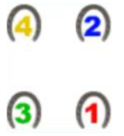
Trot
Two-beat diagonal gait where the legs work in paired diagonals
Pattern of this gait may be as follows
Right hind and left front, left hind and right front
Left hind and right front, right hind and left front
Trot beats
A rapid, diagonal two-beat gain in which the right front and left rear feet hit the ground in unison, and the left front and right rear feet hit the ground in unison
The horse travels straight without swaying sideways when trotting
1st beat = right fore / left hind
2nd beat = left fore / right hind
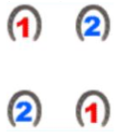
Canter / Lope
Three-beat gait where one pair of feet strike the ground simultaneously and the other two feet land independently
Right or left lead
Right lead
Left hind, right hind and left front, right front
Left lead
Right hind, left hind and right front, left front
Horses on right lead when circling to the right and left lead when circling to the left
Canter beats
A fast three-beat gait
Depending on the lead, the two diagonal legs hit the ground at the same time
The other hind leg and foreleg hitting at different times
Right-lead canter
1st beat = left hind leg
2nd beat = right hind / left fore
3rd beat = right fore leg
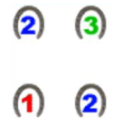
Left lead canter
1st beat = right hind leg
2nd beat = left hind / right fore
3rd beat = left fore leg
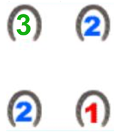
Gallop / Run
Appears to be only faster but actually a different gait containing four beats
Also has a right and left lead
Left lead
Right hind, left hind, right front, left front
Right lead
Left hind, right hind, left front, right front
Right-lead gallop
1st = left hind leg
2nd = right hind leg
3rd = left fore leg
4th = right fore leg
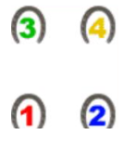
Left-lead gallop
1st = right hind leg
2nd = left hind leg
3rd = right fore leg
4th = left fore leg
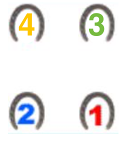
Artificial gaits
Running walk
Pace
Slow gait
Rack
Artificial gaits are natural to specific breeds of horses
Tennessee walking horse, Missouri fox trot
Five-gaited
American Saddlebred horse
Animated walk, trot, slow gait, rack, and canter
Saddlebred horse driven in harness racing and compete as trotters (2-beat diagonal) or pacers (2-beat lateral)
Running walk
The fast ground-covering walk of the Tennessee walking horse
It is an artificial gait that is faster than the normal walk
The horse moves with a gliding motion as the hind leg oversteps the forefoot print by 12 – 18 inches or more
Slow gait
This four-beat lateral gait is also known as the stepping pace
In this gait, the horse performs a broken pace, with the hind and front leg on the same side leaving the ground and landing at slightly different times
The slow gait is performed by the five-gaited Saddlebred
Pace
A lateral two-beat gait in which the right front and rear feet hit the ground in unison and the left front and rear feet hit the ground in unison
There is a swaying from right to left when the horse paces
Rack
A snappy four-beat gait in which the joints of the legs are highly flexed
The forelegs are lifted upward to produce a flashy effect
This is an artificial gait, whereas the walk, trot, pace, gallop, and canter are natural gaits
The rack is popular in the show-ring for speed and animation